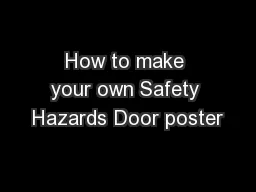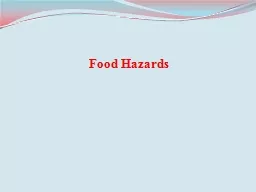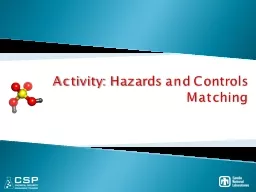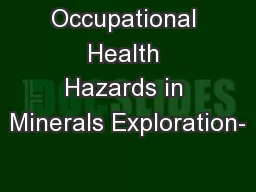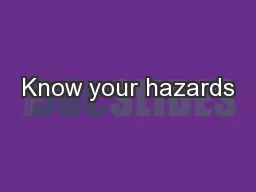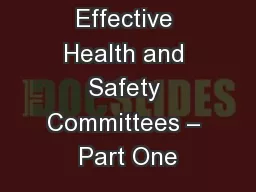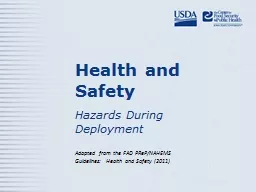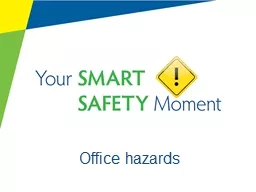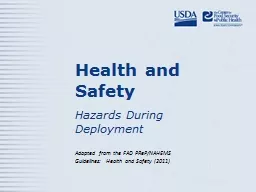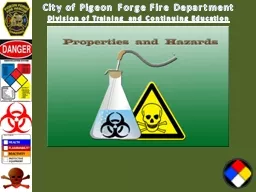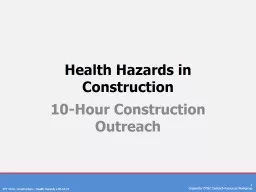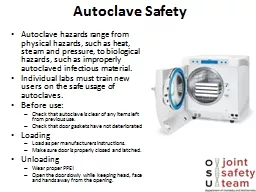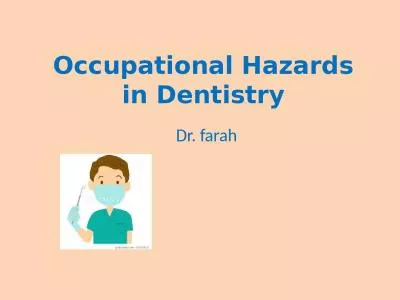PPT-Health Hazards Special Emphasis Program
Author : tatyana-admore | Published Date : 2019-06-30
Presented by Education Training and Technical Assistance 9198072875 Objectives After this course students will be aware of NCDOL Health Hazards Special Emphasis
Presentation Embed Code
Download Presentation
Download Presentation The PPT/PDF document "Health Hazards Special Emphasis Progr..." is the property of its rightful owner. Permission is granted to download and print the materials on this website for personal, non-commercial use only, and to display it on your personal computer provided you do not modify the materials and that you retain all copyright notices contained in the materials. By downloading content from our website, you accept the terms of this agreement.
Health Hazards Special Emphasis Program: Transcript
Download Rules Of Document
"Health Hazards Special Emphasis Program"The content belongs to its owner. You may download and print it for personal use, without modification, and keep all copyright notices. By downloading, you agree to these terms.
Related Documents


